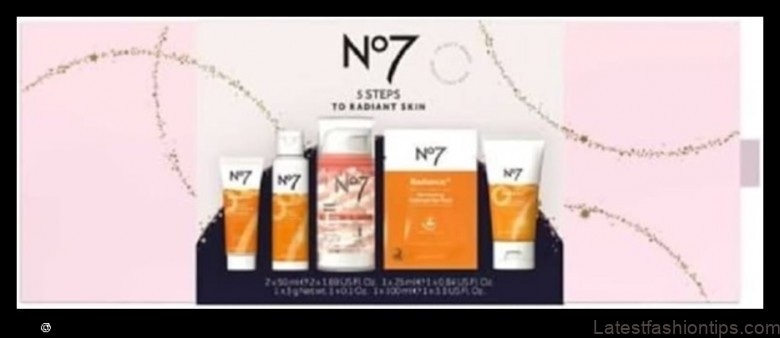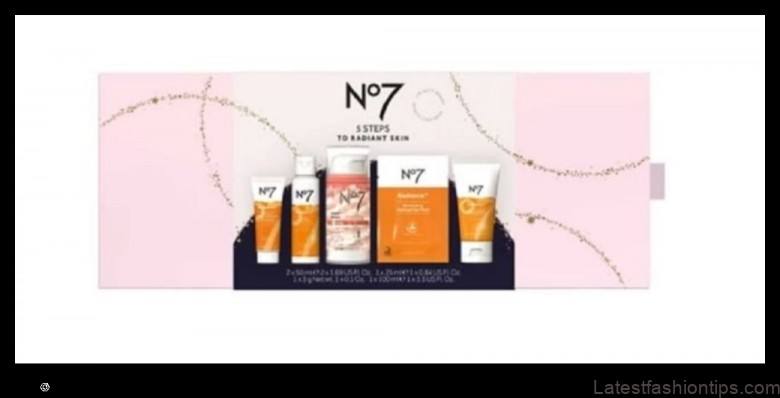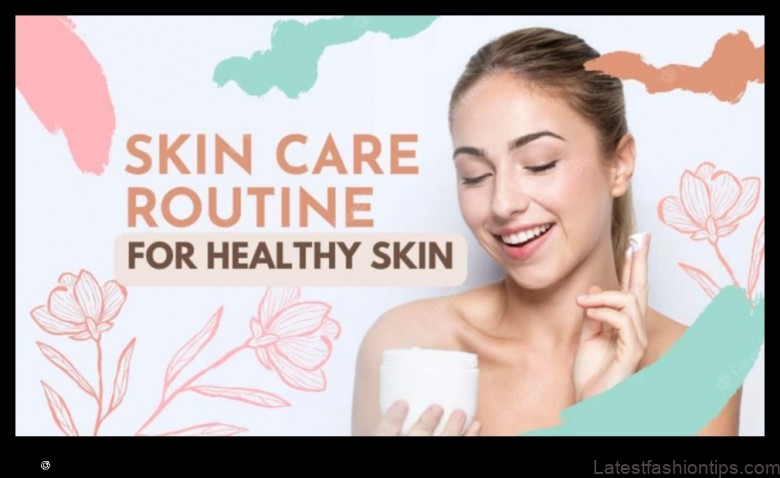
Skincare Essentials: Building a Routine for Healthy Radiance
Skincare is an important part of maintaining a healthy and youthful appearance. A good skincare routine can help to cleanse, nourish, and protect your skin, leaving you looking your best.
This guide will provide you with the basics of a skincare routine, as well as tips on how to choose the right products for your skin type. We’ll also cover topics such as cleansing, exfoliating, moisturizing, and protecting your skin from the sun.
So whether you’re just starting to develop a skincare routine or you’re looking to improve your existing one, read on for all the information you need to know.

I. Introduction
Your skin is your largest organ, and it plays a vital role in protecting your body from the elements. It also helps to regulate your body temperature and produce vitamin D.
However, your skin is also constantly exposed to environmental stressors, such as pollution, UV rays, and harsh weather conditions. These stressors can damage your skin and lead to a number of problems, including dryness, wrinkles, and acne.
A good skincare routine can help to protect your skin from these stressors and keep it looking its best. By following a few simple steps each day, you can cleanse, nourish, and protect your skin, leaving you with a healthy, radiant glow.
II. The Basics of a Skincare Routine
A basic skincare routine should include the following steps:
- Cleansing
- Exfoliating
- Moisturizing
- Protecting your skin from the sun
We’ll discuss each of these steps in more detail below.
Cleansing
The first step in any skincare routine is cleansing your skin. This removes dirt, oil, and makeup from your skin, leaving it clean and refreshed.
When choosing a cleanser, it’s important to choose one that is gentle and won’t strip your skin of its natural oils. Look for a cleanser that is formulated for your skin type. For example, if you have oily skin, you’ll want to choose a cleanser that is oil-free and non-comedogenic.
You should cleanse your skin twice a day, morning and evening. In the morning, you can use a gentle cleanser to remove any dirt or oil that has accumulated on your skin overnight. In the evening, you’ll want to use a more thorough cleanser to remove makeup and other impurities.
Exfoliating
Exfoliating is the process of removing dead skin cells from the surface of your skin. This can help to improve your skin’s texture and radiance, and it can also help to prevent acne and other skin problems.
You should exfoliate your skin 1-2 times per week. When choosing an exfoliator, it’s important to choose one that is gentle and won’t irritate your skin. Look for an exfoliator that is formulated for your skin type. For example, if you have dry skin, you’ll want to choose an exfoliator that is made with gentle ingredients, such as jojoba beads or lactic acid.
Moisturizing
Moisturizing is essential for keeping your skin healthy and hydrated. A good moisturizer can help to protect your skin from the elements, and it can also help to reduce the appearance of wrinkles and fine lines.
You should moisturize your skin twice a day, morning and evening. When choosing a moisturizer, it’s important to choose one that is formulated for your skin type. For example, if you have oily skin, you’ll want to choose a lightweight moisturizer that won’t clog your pores.
Protecting your skin from the sun
The sun is one of the biggest threats to your skin’s health. UV rays from the sun can damage your skin
| Skincare Routine | Skincare Tips |
|---|---|
| I. Introduction | – Cleanse your skin twice a day |
| II. The Basics of a Skincare Routine | – Exfoliate your skin once or twice a week |
| III. Choosing the Right Products for Your Skin Type | – Moisturize your skin daily |
| IV. How to Cleanse Your Skin | – Protect your skin from the sun |
| V. How to Exfoliate Your Skin | – Treat acne and other skin problems |
| VI. How to Moisturize Your Skin | – Prevent skin aging |
| VII. How to Protect Your Skin from the Sun | – FAQ |
| VIII. How to Treat Acne and Other Skin Problems | – |
| IX. How to Prevent Skin Aging | – |
| X. FAQ | – |

II. The Basics of a Skincare Routine
A skincare routine is a set of steps that you take to care for your skin. It can help to keep your skin healthy, hydrated, and looking its best. There are many different skincare routines out there, but the basics are the same for everyone.
A basic skincare routine typically includes the following steps:
- Cleansing
- Exfoliation
- Moisturizing
- Protecting from the sun
Each of these steps is important for maintaining healthy skin. By following a basic skincare routine, you can help to prevent skin problems, such as acne, dryness, and wrinkles.
III. Choosing the Right Products for Your Skin Type
The first step to building a skincare routine that is right for you is to determine your skin type. There are four main skin types: oily, dry, combination, and sensitive.
Oily skin is characterized by a shiny appearance, large pores, and an oily feel. Dry skin is characterized by a rough, flaky texture and a lack of elasticity. Combination skin is a combination of oily and dry skin, with oily areas on the T-zone (forehead, nose, and chin) and dry areas on the cheeks and around the eyes. Sensitive skin is easily irritated by harsh products and environmental factors.
Once you have determined your skin type, you can start to choose the right products for your skin. Here are a few tips:
- Oily skin: Choose products that are oil-free and non-comedogenic. Look for ingredients like salicylic acid, glycolic acid, and benzoyl peroxide to help control oil production and acne.
- Dry skin: Choose products that are moisturizing and hydrating. Look for ingredients like hyaluronic acid, ceramides, and glycerin to help improve skin texture and elasticity.
- Combination skin: Choose products that are oil-free for your oily areas and moisturizing for your dry areas. Look for ingredients like niacinamide, green tea, and aloe vera to help balance your skin’s oil production.
- Sensitive skin: Choose products that are gentle and hypoallergenic. Look for ingredients like oat extract, chamomile, and aloe vera to help soothe and protect your skin.
It is also important to remember that your skin type can change over time, so it is important to periodically re-evaluate your skin and make changes to your skincare routine as needed.
IV. How to Cleanse Your Skin
Cleansing your skin is an important part of any skincare routine, as it helps to remove dirt, oil, and other impurities that can clog pores and lead to breakouts. There are a variety of different cleansers available on the market, so it’s important to find one that is right for your skin type.
For oily skin, a gel or foaming cleanser is a good option, as it will help to remove excess oil without drying out your skin. For dry skin, a cream or lotion cleanser is a better choice, as it will help to hydrate your skin without leaving it feeling greasy.
When cleansing your skin, it’s important to use gentle circular motions and avoid scrubbing your skin too vigorously. This can irritate your skin and cause damage.
After cleansing your skin, it’s important to apply a moisturizer to help lock in moisture and protect your skin from the elements.
V. How to Exfoliate Your Skin
Exfoliation is the process of removing dead skin cells from the surface of your skin. This can help to improve your skin’s texture and appearance, and can also help to reduce the appearance of wrinkles and fine lines. There are a number of different ways to exfoliate your skin, including:
- Chemical exfoliation: This involves using a chemical exfoliant, such as glycolic acid or lactic acid, to dissolve the bonds between dead skin cells.
- Physical exfoliation: This involves using a physical exfoliant, such as a scrub or a brush, to physically remove dead skin cells.
When choosing an exfoliant, it is important to choose one that is appropriate for your skin type. If you have sensitive skin, you should choose a gentle exfoliant that is less likely to irritate your skin.
Exfoliating your skin should be done once or twice a week, depending on your skin type. If you exfoliate too often, you can damage your skin and make it more prone to irritation.
Here are some tips for exfoliating your skin:
- Use a gentle circular motion when exfoliating your skin.
- Exfoliate your skin in the shower or bath, when your skin is damp.
- Avoid exfoliating your skin if it is irritated or damaged.
Exfoliating your skin can help to improve your skin’s texture and appearance, and can also help to reduce the appearance of wrinkles and fine lines. However, it is important to choose an exfoliant that is appropriate for your skin type and to exfoliate your skin in a gentle way.
VI. How to Moisturize Your Skin
Moisturizing your skin is an important part of any skincare routine, as it helps to keep your skin hydrated and healthy. When your skin is properly hydrated, it can better protect itself from damage caused by the sun, wind, and other environmental factors. Moisturizer also helps to improve the appearance of your skin, leaving it looking smoother and more radiant.
There are many different types of moisturizers available on the market, so it is important to choose one that is right for your skin type. If you have oily skin, you will want to choose a lightweight moisturizer that will not clog your pores. If you have dry skin, you will want to choose a more emollient moisturizer that will help to lock in moisture.
When applying moisturizer, it is important to use a gentle touch and to avoid rubbing your skin too vigorously. You should also apply moisturizer to your skin after you have cleansed it and before you apply sunscreen.
Moisturizing your skin is an important step in achieving healthy, radiant skin. By following these tips, you can help to keep your skin looking its best.
How to Protect Your Skin from the Sun
The sun’s UV rays are one of the biggest threats to your skin’s health. They can cause premature aging, wrinkles, dark spots, and even skin cancer. It’s important to protect your skin from the sun by wearing sunscreen, hats, and sunglasses whenever you’re outdoors.
When choosing a sunscreen, look for one that has a high SPF (sun protection factor) of at least 30. You should also apply sunscreen liberally and reapply it every two hours, or more often if you’re sweating or swimming.
In addition to wearing sunscreen, you can also protect your skin from the sun by wearing hats and sunglasses. Hats with wide brims can help to block the sun’s rays from your face, neck, and ears. Sunglasses can help to protect your eyes from UV damage.
It’s also important to avoid spending too much time in the sun during the peak hours of 10am-2pm. If you do have to be outdoors during these times, try to stay in the shade as much as possible.
By following these tips, you can help to protect your skin from the sun and reduce your risk of developing skin cancer.
How to Treat Acne and Other Skin Problems
Acne is a common skin condition that affects people of all ages. It is caused by a combination of factors, including genetics, hormones, and bacteria. Acne can cause pimples, blackheads, and whiteheads. There are a number of different treatments for acne, including over-the-counter medications, prescription medications, and home remedies.
Other skin problems that can be treated with skincare products include:
- Dry skin
- Oily skin
- Sensitive skin
- Rosacea
- Eczema
If you are struggling with a skin problem, it is important to see a dermatologist to get a diagnosis and treatment plan.
IX. How to Prevent Skin Aging
As we age, our skin naturally loses its elasticity and firmness, and wrinkles and fine lines begin to appear. There are a number of things you can do to help prevent skin aging, including:
- Wear sunscreen every day, even on cloudy days.
- Limit your sun exposure, especially during the peak hours of 10am-2pm.
- Avoid smoking.
- Eat a healthy diet rich in fruits, vegetables, and whole grains.
- Get regular exercise.
- Manage stress.
- Use anti-aging skincare products that contain ingredients such as retinol, vitamin C, and peptides.
By following these tips, you can help to slow down the signs of skin aging and maintain a youthful appearance.
X. FAQ
Q: What is the best skincare routine for my skin type?
A: The best skincare routine for your skin type will depend on your individual needs. Some factors to consider include your skin’s oiliness or dryness, your skin’s sensitivity, and your skin’s concerns (e.g., acne, wrinkles, dark spots). There are many different skincare products available, so it’s important to find a combination of products that work well for your skin and that you can stick to.
Q: How often should I cleanse my skin?
A: The frequency with which you should cleanse your skin will depend on your skin type. If you have oily skin, you may need to cleanse your skin twice a day, morning and night. If you have dry skin, you may only need to cleanse your skin once a day, at night.
Q: How can I get rid of acne?
Acne is a common skin condition that can affect people of all ages. There are many different treatments for acne, and the best treatment for you will depend on the severity of your acne. Some common treatments for acne include over-the-counter topical treatments, prescription medications, and home remedies.
Table of Contents
Maybe You Like Them Too
- The Evolution of Woman’s Dress A Look at 500 Years of Fashion
- Street Styles Diary A Visual Journey through the Essence of Fashion
- Modern Mavericks Men’s Hairstyles That Break the Mold
- Fashion Fusion The Artful Blend of Style and Beauty
- Dive into Fashion Find the Perfect Hairstyle for Every Occasion


